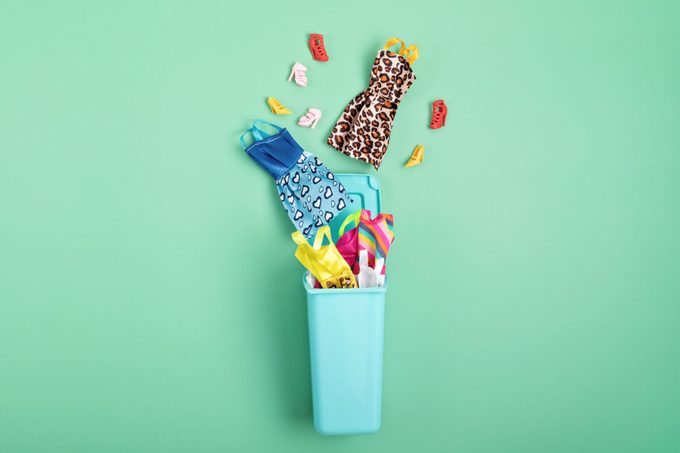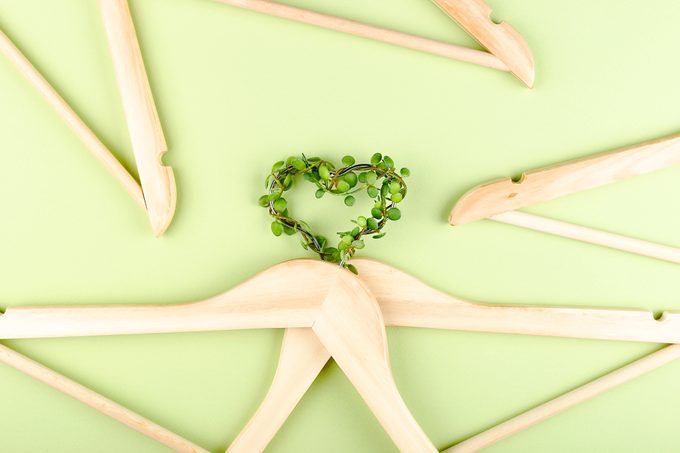What Is Fast Fashion, and Why Is Sustainable Fashion Important?
If you’re looking to lower your carbon footprint, undertake a greener lifestyle, or make one particular tiny alter that has a constructive impression, your closet is an uncomplicated spot to make eco-friendly purchasing options.

Let us be sincere, quick trend gives a quick thrill: affordable clothing that allow us to speedily refresh our wardrobes and follow the hottest developments. However, these exact same speedy-vogue brands have a whole lot of skeletons in their closets. You know how when a thing looks as well great to be legitimate it typically is? In this scenario, those people very low charges are manufactured feasible by shortcuts that harm the environment and the people who make the garments.
When considerably of the accountability rests on the shoulders of models, customer patterns are critical too, states Reimer Ivang, founder of Improved Entire world Vogue, a Danish sustainable fashion brand name. Shoppers can stand up to the hazards of speedy fashion’s environmental affect by learning to place rapidly-manner brand names and opting in its place to assist sustainable clothes models that make the most of manufacturing procedures and supplies that are extra ethical and greater for the Earth. And it is not only about what you get, it is also about what you do with the clothing when you are concluded with it. You can do superior by recycling or upcycling clothing alternatively of tossing them out.
Just before we share tips on how to shop for much more sustainable outfits, we’re heading to appear at just how quick manner became so undesirable in the 1st place.
Precisely what is fast vogue?
That $10 costume or $5 T-shirt you see hanging on a retail store rack—chances are, that’s quick fashion. The retail outlet that restyles its mannequins in new clothes weekly, or a web page that updates its offerings every day, that is rapidly style much too. Fundamentally, low cost trendy clothes is speedy manner. The expression refers to a organization model wherever makers set up a process to immediately reproduce the newest models viewed on celebrities and runways to market them to consumers for a portion of the price tag of designer lines. Collections like these are created on a mass scale that inspire a pattern of purchasing and discarding products for new outfits at a speedy pace.
| The common runway business enterprise product sees designers creating four to six collections in a yr. But rapidly-manner stores can generate 12 to 14 collections in that very same time body! |
How did quick fashion come about?
As lately as the convert of the 20th century, the vast majority of clothing was personalized to your system, either in a specialty store or manufactured at house by hand. Garments could acquire weeks to be produced. This all started to transform as the assembly traces and factories that had been the hallmark of the Industrial Revolution little by little grew to become a mainstay of outfits production—and it has stayed that way ever given that.
Beginning in the 1960s—when the average American acquired fewer than 25 objects of garments per year—fashion began turning in excess of extra speedily, and the producing approach developed together with it to continue to keep up with ever-changing preferences. Due to the fact then, the rate has only quickened: By some estimates, People acquired an average of 68 things of clothes for every yr in 2018. On normal, every single piece is worn just 7 moments right before getting cast apart, according to a single examine. Where does all that unused clothes go? To the landfill, to the tune of 10.5 million tons of textiles (the greater part of it clothes) in 2015, according to the Environmental Safety Company.
Examples of quickly-vogue manufacturers
One particular of the pioneers of rapid manner is the nicely-regarded Spanish brand Zara. Founded in 1975, the retailer created its title producing much less highly-priced versions of substantial-close clothing. This design has been copied by many other merchants, which include H&M, Shein, Boohoo, Uniqlo, Topshop, Primark, Mango, and more.
How to location fast-style models
Affordable vogue is manufactured with inexpensive labor and affordable supplies. A few telltale symptoms to be on the lookout for consist of:
- Low expense. One of the easiest means to spot a rapidly-manner brand is to seem at the charges. If they’re way too great to be real, they in all probability are.
- Synthetic materials. While some top quality things are designed with polyester, rayon, and nylon, quick fashion normally uses these a lot more than natural materials this kind of as cotton and silk.
- Badly finished ending touches. Test seams and buttons. With quick trend, seams might give away easily and buttons may possibly be loose.
- Rotating stock. Models that update their stock weekly or bi-weekly are subsequent the rapid-vogue product to hold shoppers shopping for, discarding, and purchasing far more.
Issues with rapidly vogue

Finding all these new products of outfits into the fingers of shoppers means that corners are slash when it arrives to building, producing, and shipping.
Environmental impression
Just one of the lowest priced and most well-known fabrics is polyester however, it will come with a wardrobe-entire of challenges. For just one, it usually takes almost 432 million barrels of oil annually to make synthetic textiles. This reliance on fossil fuels produces greenhouse gas emissions that are joined to weather improve. These plastic-based fabrics also pose a risk of shedding microplastics—tiny items of plastic that are 8 mm in length—in the washing machine that are then washed into our oceans, the place they pollute the oceans and other waterways.
Even natural fabrics are problematic when made use of by speedy-manner vendors. In 2019 by yourself, standard cotton crops grown in the U.S. essential 68 million lbs . of pesticides. These chemicals really do not just sit on cotton crops, they contaminate soil from runoff h2o and pose a possibility of drinking water and soil contamination for area communities.
Speedy trend does not get a lot greater when it will come to the next stage in the design and style process—achieving all all those lovely shades. It takes up to 200 tons of drinking water to generate a ton of dyed clothing. Even worse however, the standard dyes made use of are a mixture of chemical compounds that do not break down effectively as they enter rivers and oceans. In excess of the decades, these substances accumulate in the setting, and in some cases, waterways shut to factories in which runoff water from the dyeing procedure enters have turn into as well dangerous to use. A person illustration: In China, a world wide money of the clothes manufacturing sector, more than 70 per cent of the rivers are contaminated and considered unsafe for human use. You can do your section to preserve water at household.
The human price tag
Inexpensive outfits is produced by cheap labor: Thirty-five cents for each hour—that’s the wage for manufacturing unit employees who generate clothing for some common suppliers.
At times doing the job problems are unsafe way too. The 2013 incident at the Rana Plaza building in Bangladesh highlighted the charge of rapidly manner when the constructing that housed 5 garment factories collapsed, killing extra than 1,000 garment personnel. The tragic incident shone a highlight on the inhumane conditions at the manufacturing unit, including slave wages, labor rights violations that included 14-hour workdays, actual physical and verbal abuse, and exposure to harmful chemical compounds.
Unfortunately, these challenges are even now mainly unaddressed during the vogue industry, and human rights teams are continuing to combat for workers’ legal rights. Just one way you can support is to shop for brands that are Fair Trade Certified.
Affect on animals
Animals are harmed by quickly-manner output in a variety of methods. The microplastics stated above really don’t just pollute oceans, they are also unsafe to maritime daily life. Sea creatures, from very small lugworms and shrimp to big whales, ingest microplastics. Whilst the consequences of microplastics on sea lifetime are continue to getting examined, study has revealed that in more compact sea animals they can block their digestive tracks and guide to hunger.
Then there are the threats to their habitats. Rayon and viscose are manufactured of wood pulp. Entire forests in Indonesia, Canada, and the Amazon have been logged to make clothing, destroying animal habitats in the procedure.
And lastly, the most direct effects is to the animals lifted and generally slaughtered for the components they deliver, these kinds of as silk and leather-based. Although there are arguments for steering clear of all supplies that come from animals, the ones utilized by rapid-trend manufacturers are particularly egregious. For example, some silkworms are boiled alive so that the silk from their cocoons can be harvested. (Wild silk or peace silk, where the moth leaves its cocoon behind, are deemed much more humane solutions.)
Disposable garments
Most of the garments developed by speedy-fashion stores ultimately ends up in landfills some estimates suggest that the normal American throws absent 82 pounds of garments each calendar year. “Because outfits is low cost and plentiful, we don just about every piece fewer and toss it out at bigger costs than in the earlier,” says Karla Magruder, founder of Accelerating Circularity, a team that promotes recyclable style. “People in the U.S. throw absent somewhere around 11 to 12 million tons of textiles for every calendar year,” she states.
So, what can we do now?

Now that you know what speedy style is and have a greater notion how to place these makes, you can get started to seek out a lot more sustainable trend choices. At very first, you may be tempted to embrace H&M’s “conscious” line or Boohoo’s most recent “sustainable” selection. But, be conscious that these normally volume to practically nothing improved than greenwashing. “Many organizations use the time period [“sustainable”] to exhibit that they’ve altered a little share of defective business enterprise styles, but they are significantly from currently being a portion of the solution,” Ivang says.
As a substitute, a smarter plan is to glance for sustainable makes that have designed sustainable producing techniques into their company product from the commence. That can consist of sourcing all-natural or natural and organic materials (GOTS-certified is the gold conventional) and making sure that their garment workers are paid a livable wage and have truthful doing work ailments.
Yet another way to embrace sustainability is to shop fewer, get classic or secondhand, have on products lengthier, and recycle or upcycle your apparel rather of throwing out outdated products. Recycling your clothing can have the additional advantage of creating resources for models that repurpose present fabrics as a substitute of relying on new methods, points out Magruder.
What is following for fashion?
There are a lot of variations that need to have to come about to make the sector far better for both of those the atmosphere and the people today who make these clothes.
A garment’s lifecycle—from the uncooked supplies employed to the length of time a garment is worn and how its discarded—is essential to making a greater style model. “The trend market demands to find out how to make fewer, extra strong clothes that are made in a way that allows them to be easily recycled,” Magruder suggests.
As people, we really do not have to wait around for quickly-trend brand names to recycle and make better apparel. We can begin supporting sustainable manner makes, shopping for less overall, and upcycling and recycling our garments. If you’d like to find out more about imaginative tips on how to upcycle garments, read about Ocean Sole, the Kenyan-based mostly group turning discarded flip-flops into attractive artwork.
Sources:
